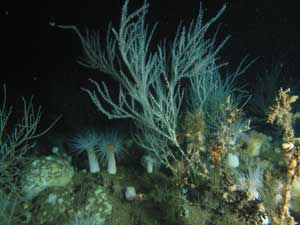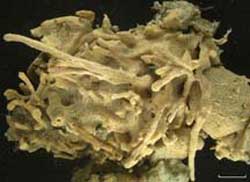After leaving the Space Test Centre in Germany on 29 August, CryoSat has safely arrived at the Plesetsk Cosmodrome, about 800 km north of Moscow, Russia. CryoSat is scheduled for launch on 8 October 2005 at 15h02 UTC.
The convoy was initially transported by truck from IABG (Industrieanlagen-Betriebsgesellschaft mbH) in Ottobrunn to Munich airport, where it was stored in a hangar over night before being loaded onto an Antonov-124 cargo aircraft for the three and a half hour fligh

Expedition team dodges storm and returns to gulf seafloor
Despite having to evade hurricane Katrina, a team of scientists from Harbor Branch and other institutions is returning to port this Sunday with new tales from the deep after completing their second annual Deep Scope expedition. The group has discovered a mysterious visual capability in a deep-sea crab; captured new video of a large, recently discovered squid species; and took clear video of the world’s first known fluor

Thanks to the doggedness of a Cornell University marine biologist, researchers have discovered that one of Maine’s most important fishing areas has been invaded by an alien tunicate, or sea squirt, that could threaten the commercial fishing industry there.
A rapid assessment survey for marine invasive species in Cobscook Bay in August found a type of sea squirt — Didemnum sp. — that can damage ocean floor habitats and commercial species that live there. The survey was conceived
New results shed light on how Antarctica became the icy, barren continent that we know today. British Antarctic Survey (BAS) scientists have discovered that 30-50 million years ago, South America and Antarctica split apart very rapidly. This formed the Drake Passage and resulted in a major global cooling. The findings are published in the latest issue of Earth and Planetary Science Letters.
Lead Author Dr Roy Livermore says ‘we deciphered the remarkable ‘herringbone’ pattern of
ESA’s multi-sensor Envisat satellite has gathered a unique view of Hurricane Katrina in the Gulf of Mexico. While an optical image shows characteristic spiralling cloud patterns, a simultaneous radar observation pierces through the clouds to show how Katrina’s 250-kilometre-an-hour an hour winds scour the sea surface.
Envisat simultaneously acquired these images at 1550 UTC (1150 US Eastern Daylight Saving Time) on 28 August, with its Medium Resolution Imaging Spectrom
For the first time, scientists have produced images of the oceanic crust and found that the upper and lower layers of the crust are likely formed from different magma pools. The images begin to answer some lingering questions about where new ocean crust comes from and whether it is all formed the same way.
Geophysicists Robert Detrick and Juan-Pablo Canales of Woods Hole Oceanographic Institution (WHOI) and colleagues used reflected seismic, or sound, waves to successfully image t